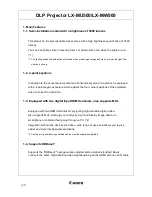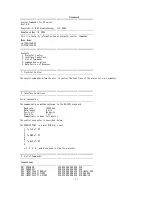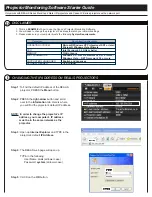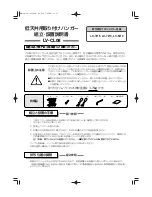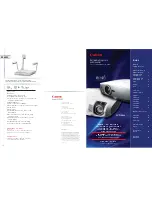
Operation
28
4.
If the projector is activated for the first
time, select your OSD language following
the on-screen instructions.
5.
If you are prompted for a password, press
the arrow keys to enter a six digit
password. See
"Utilizing the password
function" on page 33
for details.
6.
Switch all of the connected equipment on.
7.
The projector will start to search for input
signals. The current input signal being
scanned displays in the screen. If the projector doesn't detect a valid signal, the
message 'No Signal' will continue displaying until an input signal is found.
You can also press SOURCE on the projector or remote control to select your
desired input signal. See
"Switching input signal" on page 35
for details.
• If no signal is detected for 3 minutes, the projector automatically enters
ECO BLANK mode.
Adjusting the projected image
Adjusting the projection angle
The projector is equipped with 1 quick-release adjuster foot and 1 rear adjuster foot.
These adjusters change the image height and projection angle. To adjust the projector:
1.
Press the quick-release button and lift the
front of the projector. Once the image is
positioned where you want it, release the
quick-release button to lock the foot in
position.
2.
Screw the rear adjuster foot to fine tune
the horizontal angle.
To retract the foot, hold up the projector while
pressing the quick-release button, then slowly lower the projector. Screw the rear
adjuster foot in a reverse direction.
If the projector is not placed on a flat surface or the screen and the projector are not
perpendicular to each other, the projected image becomes trapezoidal. To correct
this situation, see
"Correcting 2D keystone" on page 29
for details.
• Do not look into the lens while the lamp is on. The strong light from the
lamp may cause damage to your eyes.
• Be careful when you press the adjuster button as it is close to the
exhaust vent where hot air comes from.
Auto-adjusting the image
1
2































